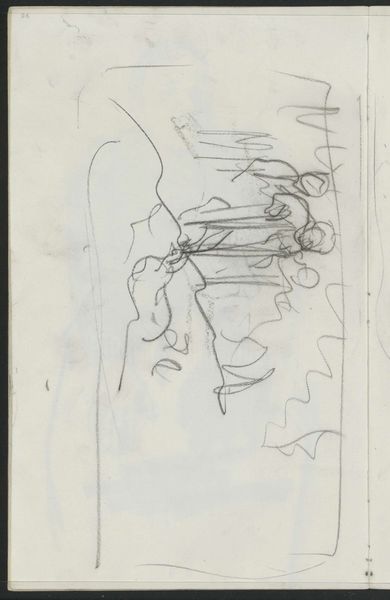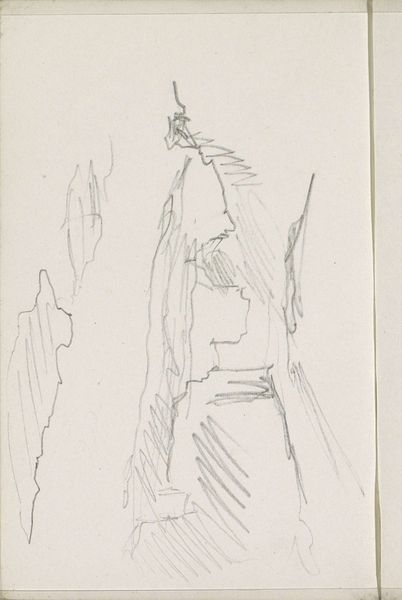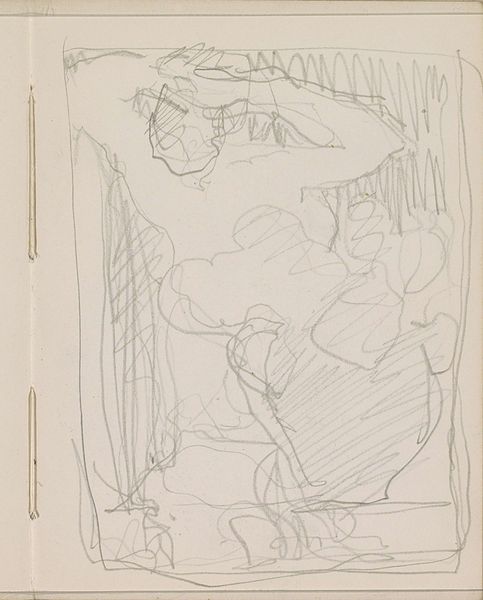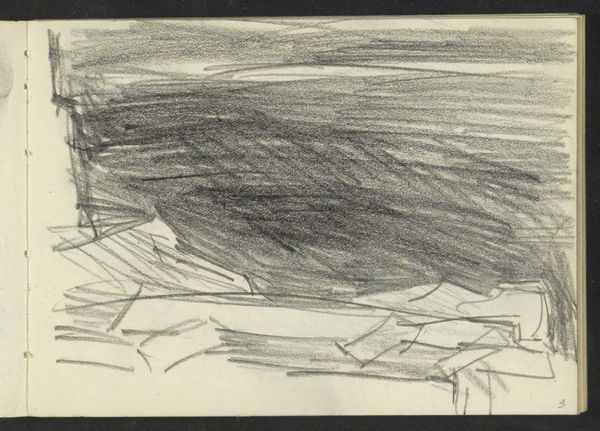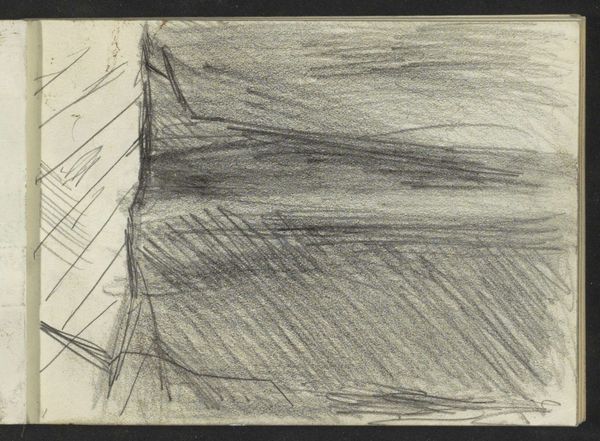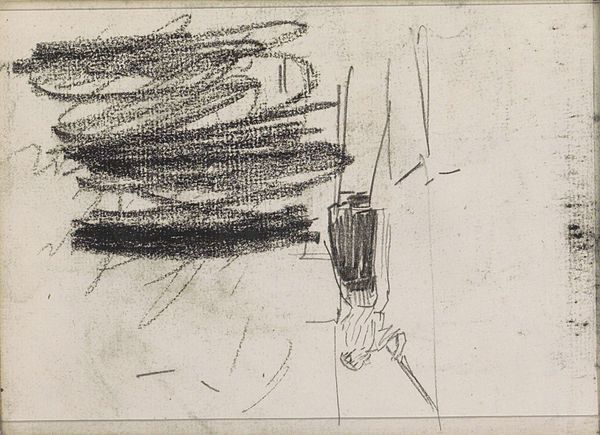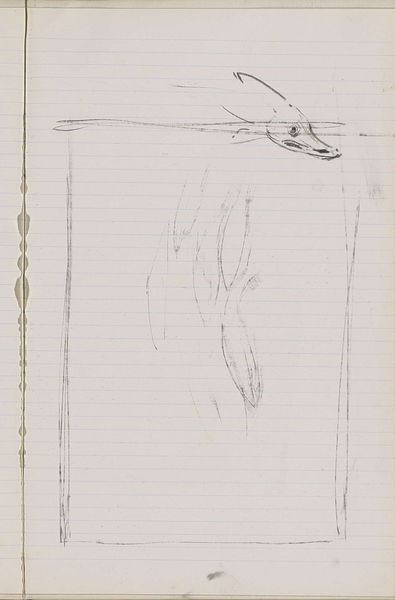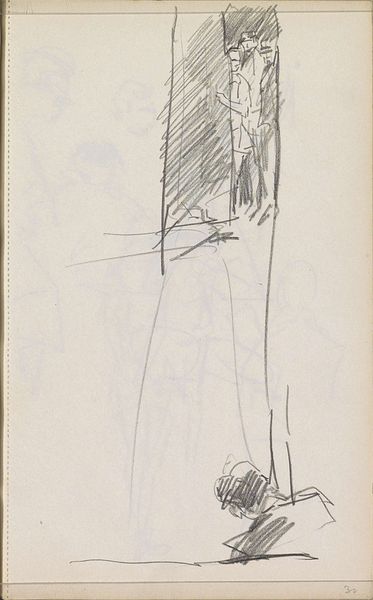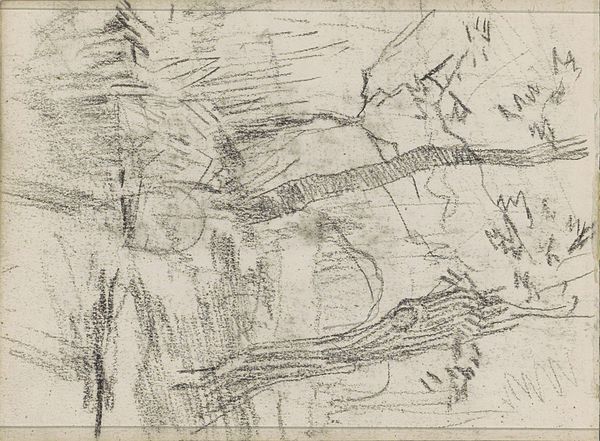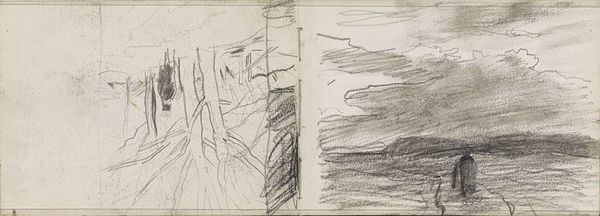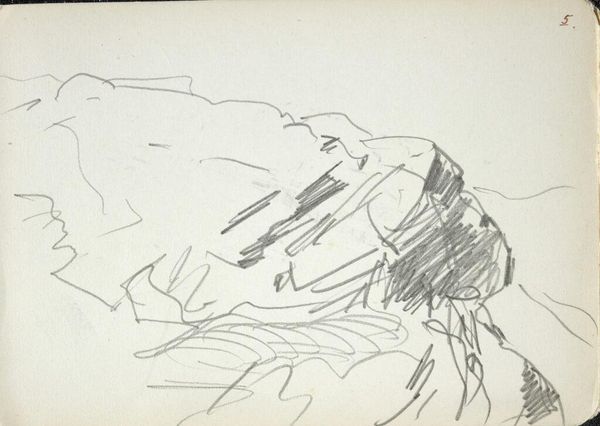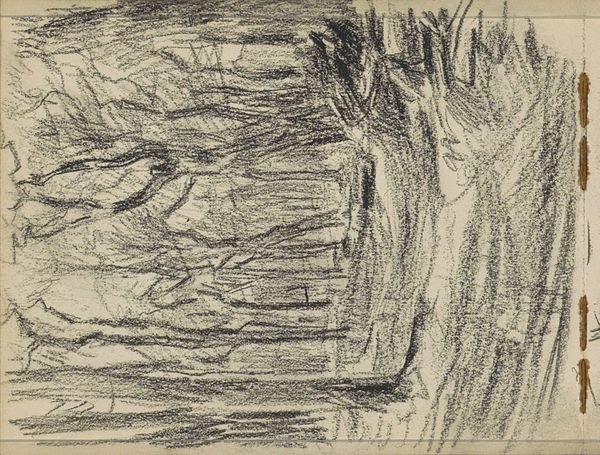
Copyright: Rijks Museum: Open Domain
Editor: So, this is "Kale bomen voor een hek," or "Cabbage Trees by a Fence," a pencil drawing by Anton Mauve, sometime between 1848 and 1888. It’s currently at the Rijksmuseum. The drawing has a simple, almost ephemeral quality... What do you see in this piece? Curator: What immediately strikes me is the depiction of the rural landscape, but I see it also as a document of land usage and access during a time of great social change. Mauve's choice of subject reflects the realities of agricultural labor and the often-unseen structures of rural life, particularly the plight of landless workers. Editor: Landless workers? I wouldn't have made that connection from a landscape drawing. How did the expansion of urban industry play into Romantic landscapes such as this? Curator: These "romantic" depictions often masked the deep inequalities of the time, like enclosure laws dispossessing people of common land, the same time romanticism in art really bloomed. Mauve’s choice to focus on such an ordinary scene might be read as a subtle commentary on this displacement. Are the cabbage trees themselves symbolic, do you think? Of sustenance, of struggle? Editor: Maybe... Or, is that reading too much into a quick sketch? It’s fascinating how much context can change how we view art. Curator: Exactly. Even seemingly simple landscape drawings offer a lens through which to examine broader questions of labor, access, and social justice. They can invite us to think critically about the romanticization of rural life. Editor: This makes me consider all landscape art differently now. Thanks!
Comments
No comments
Be the first to comment and join the conversation on the ultimate creative platform.
